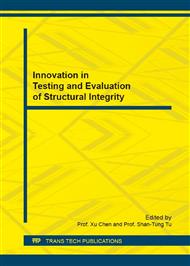p.106
p.112
p.117
p.122
p.127
p.132
p.137
p.142
p.148
Unified Constitutive Modeling towards Enhanced Structural Integrity
Abstract:
Design and analysis of critical components in energy (nuclear, solar and fossil power), aerospace, automobile and chemical industries based on detailed inelastic analysis can enhance structural integrity and thereby economy. Especially for the components exposed to very high temperature thermomechanical fatigue loading, unified inelastic analysis based life prediction may enhance accuracy. A unified constitutive model (UCM) with features of strain rate-dependence, static recovery, mean-stress evolution, strain range-dependence, and finally creep damage is developed. The modified UCM is validated against simulating a broad set of strain-controlled isothermal and anisothermal fatigue and fatigue-creep responses, and stress-controlled creep responses of Haynes 230. Some of these results are presented to demonstrate improved simulations by the modified UCM. Importance of damage parameters in improving simulations in the tertiary creep regime is observed.
Info:
Periodical:
Pages:
127-131
Citation:
Online since:
September 2016
Keywords:
Price:
Сopyright:
© 2017 Trans Tech Publications Ltd. All Rights Reserved
Share:
Citation:


